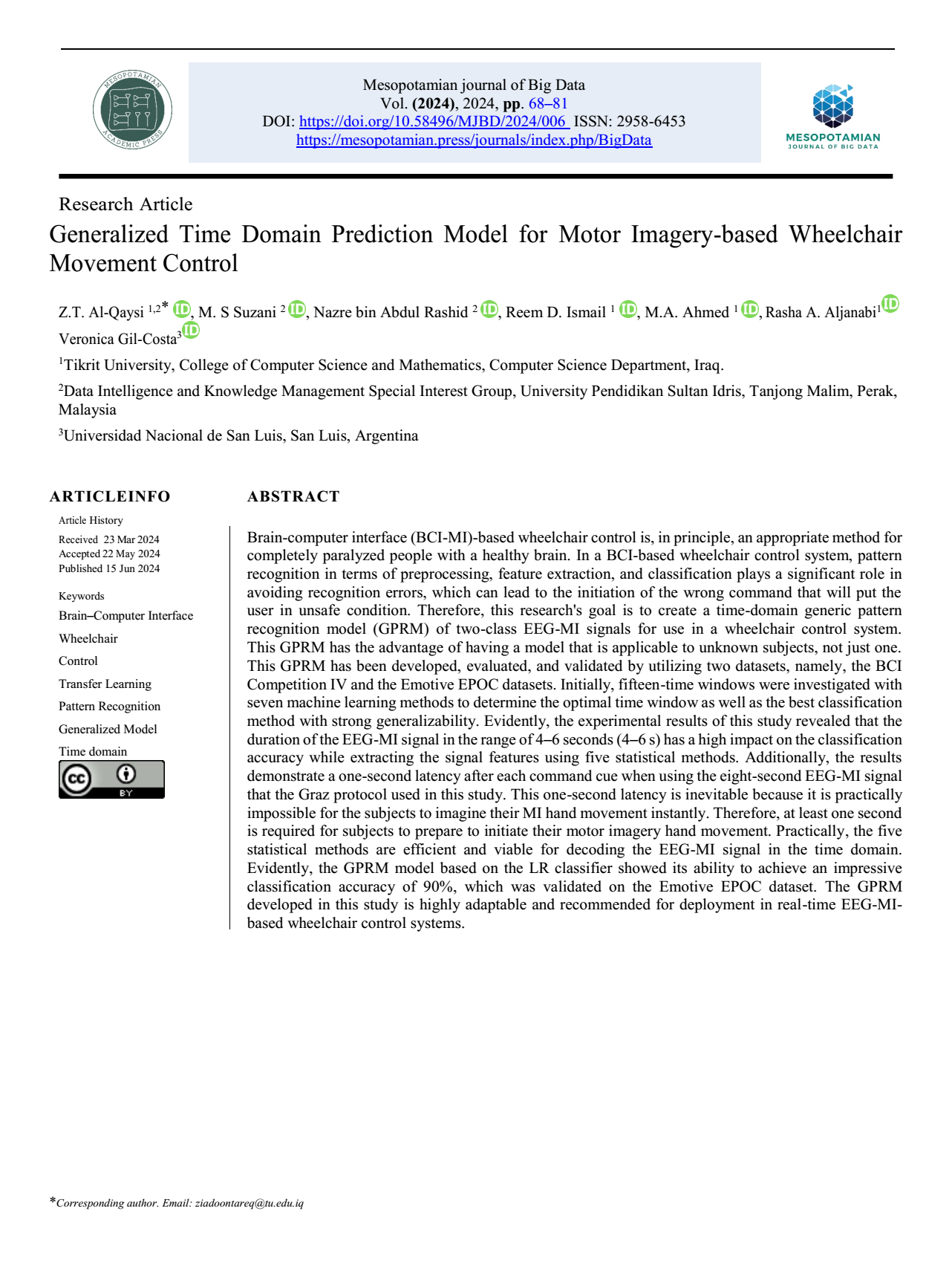Generalized Time Domain Prediction Model for Motor Imagery-based Wheelchair Movement Control
Main Article Content
Abstract
Brain-computer interface (BCI-MI)-based wheelchair control is, in principle, an appropriate method for completely paralyzed people with a healthy brain. In a BCI-based wheelchair control system, pattern recognition in terms of preprocessing, feature extraction, and classification plays a significant role in avoiding recognition errors, which can lead to the initiation of the wrong command that will put the user in unsafe condition. Therefore, this research's goal is to create a time-domain generic pattern recognition model (GPRM) of two-class EEG-MI signals for use in a wheelchair control system.
This GPRM has the advantage of having a model that is applicable to unknown subjects, not just one. This GPRM has been developed, evaluated, and validated by utilizing two datasets, namely, the BCI Competition IV and the Emotive EPOC datasets. Initially, fifteen-time windows were investigated with seven machine learning methods to determine the optimal time window as well as the best classification method with strong generalizability. Evidently, the experimental results of this study revealed that the duration of the EEG-MI signal in the range of 4–6 seconds (4–6 s) has a high impact on the classification accuracy while extracting the signal features using five statistical methods. Additionally, the results demonstrate a one-second latency after each command cue when using the eight-second EEG-MI signal that the Graz protocol used in this study. This one-second latency is inevitable because it is practically impossible for the subjects to imagine their MI hand movement instantly. Therefore, at least one second is required for subjects to prepare to initiate their motor imagery hand movement. Practically, the five statistical methods are efficient and viable for decoding the EEG-MI signal in the time domain. Evidently, the GPRM model based on the LR classifier showed its ability to achieve an impressive classification accuracy of 90%, which was validated on the Emotive EPOC dataset. The GPRM developed in this study is highly adaptable and recommended for deployment in real-time EEG-MI-based wheelchair control systems.
Article Details
Issue
Section

This work is licensed under a Creative Commons Attribution 4.0 International License.
